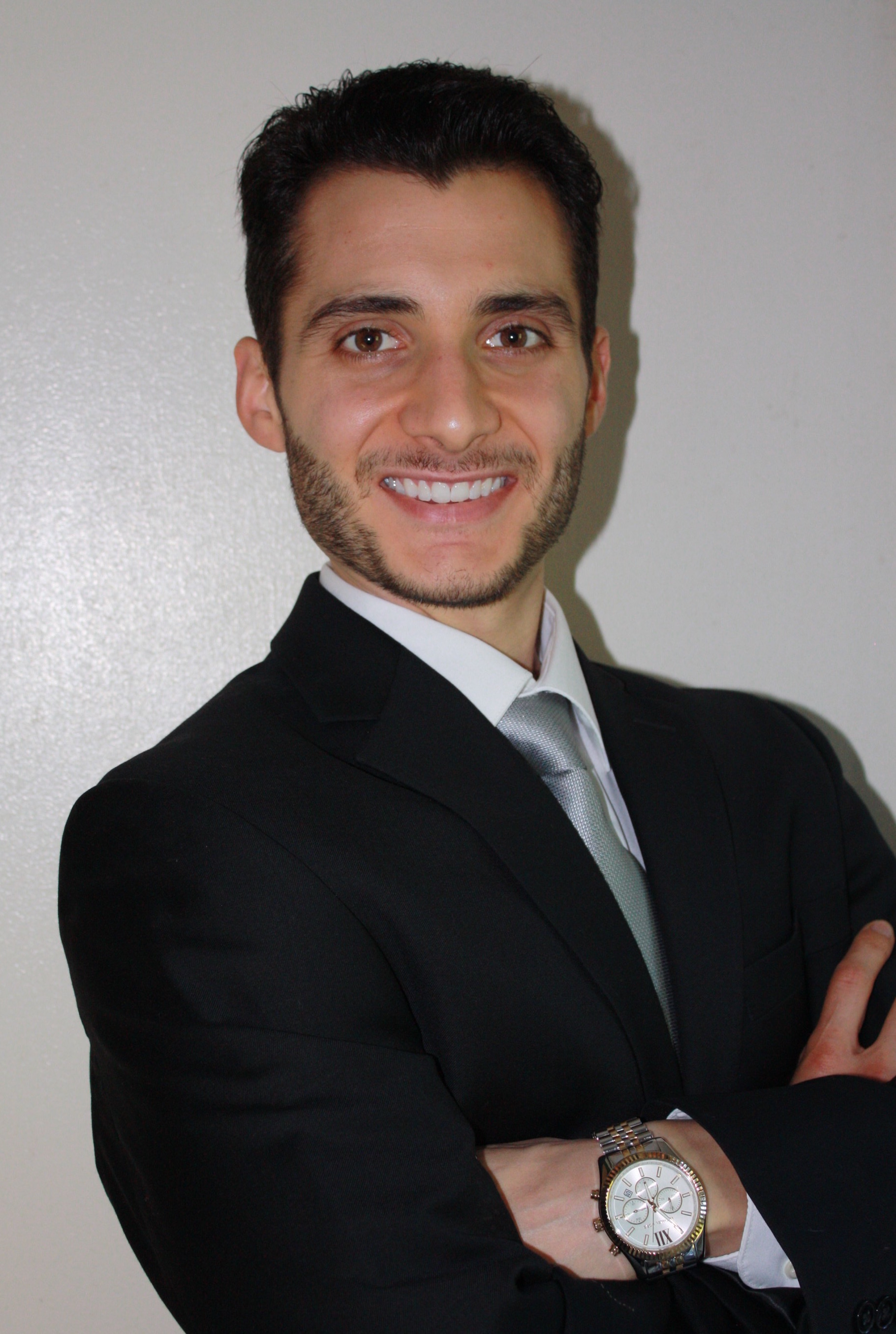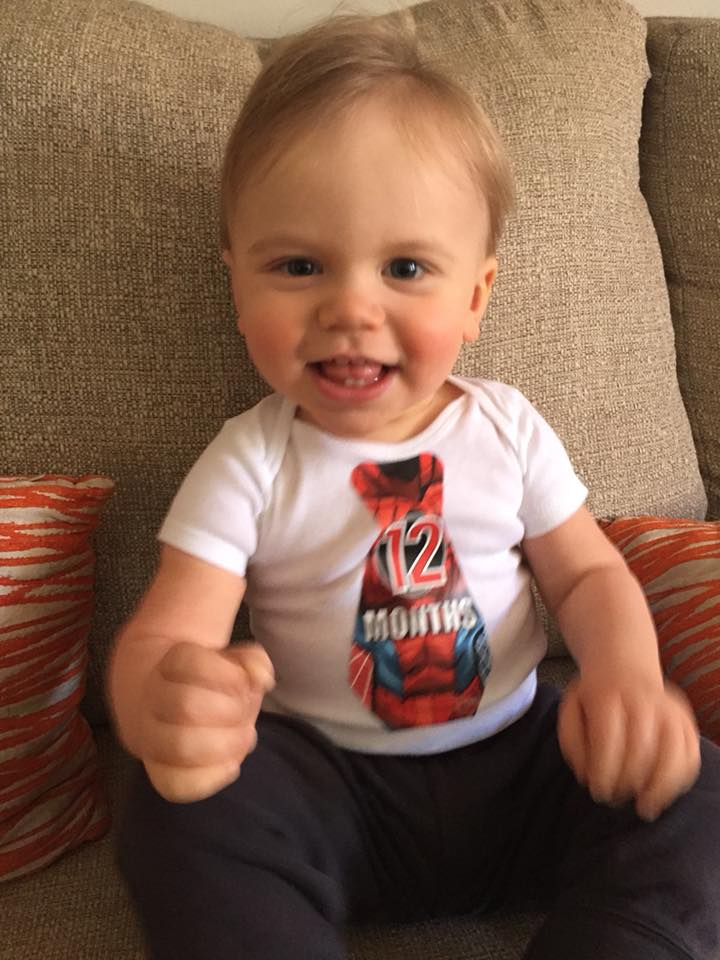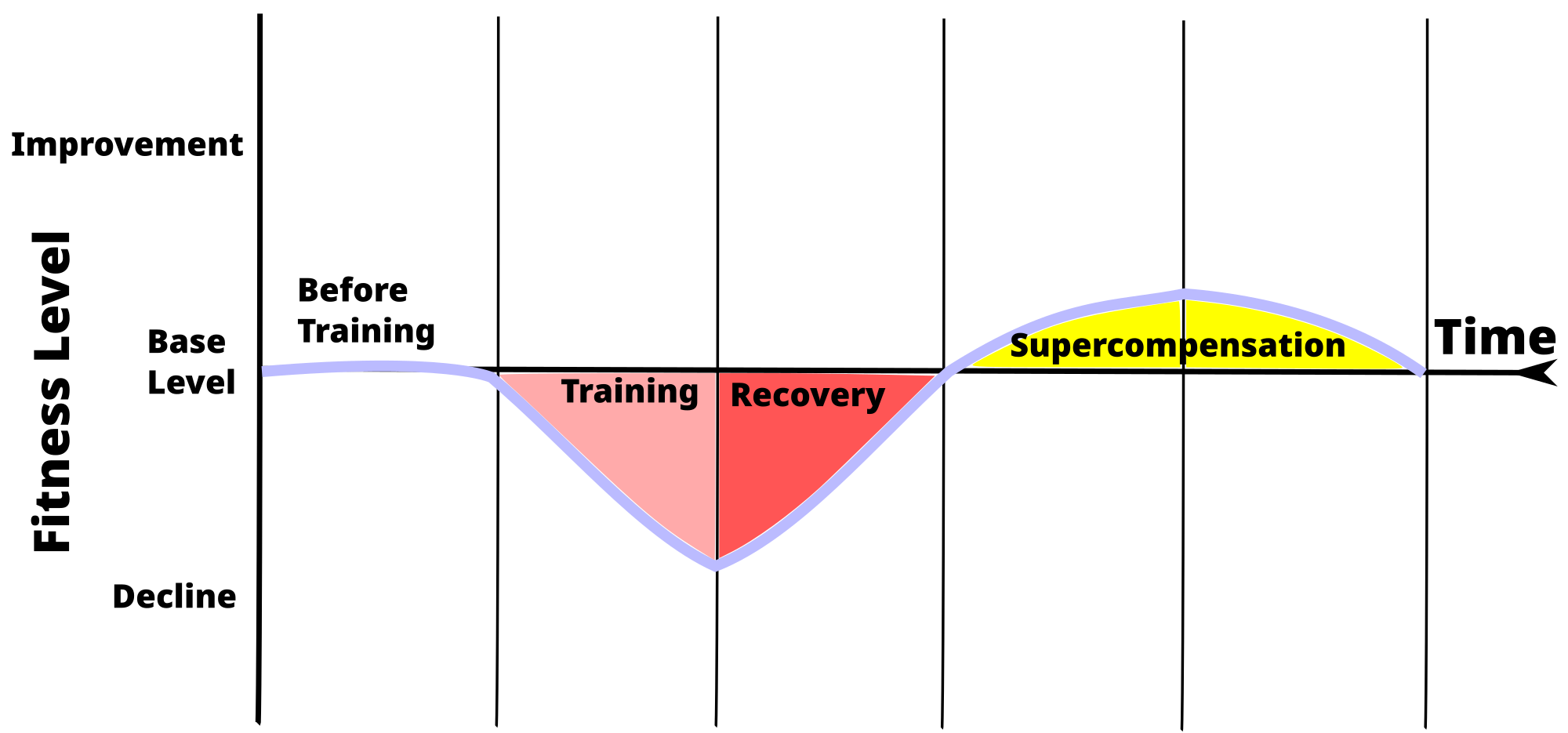I always like to say the progress you make in the gym are the direct result of how well you allow yourself to recover.
As counterintuitive as it sounds you break muscle down in the gym, and it’s the time away from deadlifts, squats, and daily WODs that your body recovers and bounces back stronger than before.
Today’s guest post from TG.com regular, Dr. Nicholas Licameli, expounds on some of the best (and simplest) ways you can get a little more recovery in your life.
It’s not as easy as telling someone to “go to bed.”
Enjoy.

My Top Recovery Tips
As soon as a training session ends, the goal should be to start the recovery process.
In order for us to consistently make improvements in our bodies and our training, we need exercise that overloads our current tolerance AND adequate recovery. In other words, we need to challenge, break down, and fatigue our muscles as well as recover from that challenge, break down, and fatigue.
There are many ways to look at fatigue. One common breakdown is peripheral fatigue and central fatigue. Peripheral fatigue is simply the physical stress, break down, and depletion of glycogen that muscles experience during training. This decreases strength, power, and performance and causes muscle soreness.
Central fatigue is a bit different.
Without going too in depth (that’s for another article), I introduce the autonomic nervous system, made up of the sympathetic (SNS) and parasympathetic (PNS) nervous systems. The SNS controls our stress response, or “fight or flight.”
SNS controls our bodies when we come face to face with a grizzly bear. We’re going to sweat and our heart rate, blood pressure, and respiratory rate will increase. During this state, we are essentially mentally and physically breaking down our bodies. The PNS controls the recovery response, or “rest, digest, and recover.” During this state, our blood pressure, heart rate, and respiratory rates all decrease.
It is in this state that we mentally and physically rebuild and recover.
Interestingly enough, the brain’s mechanism for learning works similarly to the mechanism by which muscles grow and become stronger.
Muscles do not grow in the gym.
Training causes muscles to be broken down. It is during recovery and sleep that muscles make adaptive changes.
Similarly, we do not learn while we attend a lecture.
The lecture is like a training session because we do not make adaptive and lasting breakthroughs while in class. Our brains make new connections and truly absorb new knowledge during the rest, digest, and recover phase, which occurs after the lecture and usually during sleep.
I Sleep Every Night, Isn’t That Enough?
Not quite.
Imagine this sample day:
Alarm goes off (for the 5th time…thanks a lot snooze button) and you jump out of bed feeling like you’re running late. You go into the bathroom, get washed, get dressed, sprint down the stairs, grab some coffee and a quick to-go bite to eat, and you get into your car.
Some traffic, nasty drivers, and frantic lane changes later, you make it to the office a few minutes late. With no time to prepare, you dive right into your daily work duties.
After a stressful day at work (and getting yelled at by your boss for being late) and four cups of coffee, you rush to get home to pick up the kids from school. The commute home is no better than the morning, but you manage to get there on time. You make it home, give the kids a snack[/efn_note]As if I know anything about childcare. Sorry parents, this article is written by a young man without children…yet.1 and head out to the gym.
After taking a pre workout with enough caffeine to give heart palpitations to a Clydesdale horse, you manage to get psyched up for your workout. After a great workout, you jump in the car newly energized and ready to make dinner for the family and help the kids with homework. After collapsing on your bed and staring blankly at your Instagram feed until you can’t keep your eyes open, you manage to somehow fall asleep.
What’s the point of this example?
This is an entire day spent in a sympathetic state!
Remember, the sympathetic system is the fight, flight, and physical breakdown system. There is no time allotted to the parasympathetic system: rest, digest, and recover.
Things like stress, caffeine, and training are all highly sympathetic.
Here’s the good news!
A day like this can be easily changed for the good. All it takes is a few minutes of actively disconnecting from the grind. My favorite (and in my opinion, the simplest) way to accomplish this is simply breathing.
That’s right. Good ol’ breathing.
Inhale deeply and exhaling slowly. Let your shoulders drop down on the exhale. Redirect your mind away from the day-to-day and focus on your breathing (more on this below).
In my office, we set an egg timer for one hour. When the timer goes off, everyone stops and takes a deep breath. It takes maybe 6 seconds and has had a significant impact on staff and patients alike. No egg timer? Every time you slip away for a bathroom break, try making it a point to take a deep breath. It may even be a good idea to bring along loved ones. What could be a better way to end the day than a couples breathing session in bed?
Actually, don’t answer that.
Note From TG: BOM, CHICKA BOM BOM
It seems logical that a proper recovery plan would target both types of fatigue. The following is a list of some recovery techniques that research has shown may be effective.
The techniques will target both types of fatigue and keep you on your way to achieving and surpassing your goals. Before we go on, it is important to note that no recovery technique, including the ones below, will be effective without proper sleep and nutrition. Getting your Z’s and eating properly to fuel and refuel our bodies are most important.
That being said, let’s get to it!
In an already packed schedule, it is not feasible to think you will be able to set aside time to do each technique, so I’ve numbered them from 1 (most important) to 4 (least important), in my opinion of course.
My opinion is based on the current research, effectiveness, convenience, and anecdotal experience both personally and professionally. It should be noted that although there is some research supporting the use of these techniques, many of the mechanisms and overall effectiveness still warrant further study.
For more information about specific parameters and references (and if you want to feel really insignificant about yourself and the quality of your own content), be sure to check out Chris Beardsley’s work at strengthandconditioningresearch.com right here.
1. Deep Breathing and Meditation
What Is It?
Using deep, controlled breathing and meditation to induce a state of physical and mental relaxation.
What Does It Do?
Deep breathing and meditation increases parasympathetic nervous system activity (rest, digest, recover) and decreases sympathetic nervous system activity (fight or flight).
How to Do It?
Choose a relaxing environment (an empty room, out in nature, etc.) and position yourself in a comfortable position (I prefer lying on my back with a pillow under my head and a pillow under my knees). Breathe in deeply through your nose and imagine the breath filling up and expanding your abdomen and lower back.
Hold for a few seconds and then exhale through your mouth in a controlled manner (don’t just blow the air out). With each exhale, imagine your body melting into the floor. Keep your mind focused on your breathing. “Is this an ‘in’ breath or an ‘out’ breath?” is the only thinking that should be happening.
If you hear a car horn and your attention goes to the car, redirect your mind back to your breathing. If your mind drifts to that report you have to write at work today, redirect your mind to your breathing. Some types of meditation actually involve allowing those intrusive thoughts in, and accepting their presence. If they are of significance, take moment to write them down.
If they are insignificant (be honest with yourself), push them away and redirect your mind to your breathing. Meditation takes practice, but as you train your brain to control intrusive thoughts and focus on the moment, you’ll see drastic changes in your recovery as well as your life.
2. Active Recovery
What Is It?
Active Recovery involves performing light resistance training or cardio either immediately following a workout or between workouts.
What Does It Do?
May reduce muscle soreness, limit strength losses, and even improve mood.
How to Do It?
Perform active recovery by using a light load (30% of 1 rep max) for about 20-50 reps for less than 60 minutes or using an active cool down such as a stationary bike for roughly 15 minutes.
Note From TG: Check out my Bloop, Bloop, Bloop Workout HERE which touches on the same idea a Nicholas describes and gives you some ideas on what to do.
3. Foam Rolling
(For an in depth look at foam rolling, be sure to check out my previous article here and my podcast here, which are much more comprehensive than what is described in this article.)
What Is It?
Foam rolling involves lying on a roller and using gravity to apply pressure to a muscle. The roller is pressed into the muscle belly and the user rolls up and down the length of the target muscle.
What Does It Do?
Like deep breathing and meditation, foam rolling can tap into the parasympathetic nervous system (rest, digest, recover) and reduce sympathetic nervous system activity (fight or flight) by inducing a global short-term decrease in muscle tone.
Muscle tone is the continuous passive contraction of a muscle controlled subconsciously by the brain. In other words, it’s a muscle’s resistance to passive stretch.
Tone is created by a constant subconscious message from the brain telling a muscle to contract. Many times the sensation of muscle “tightness” has more to do with tone and less to do with actual muscle length.
How to Do It?
1. View video above.
2. Or, if you learn better by reading:
Start off with a slow, steady roll covering the entire muscle group, scanning the area for tender spots. Think of scanning the area as a blind person would scan a new environment. Once you find a tender spot, pause and hold on that spot until a release is felt and the tenderness lessens. Add some deep breathing while holding on the tender spot to further assist in the release. Follow this up with another slow, steady roll over the entire muscle, just like how you started. It is true that foam rolling should be a bit painful, but too much pain will cause an increase in muscle tone, which, as previously mentioned, is exactly the opposite of what we want to do. More pain is not better.
Better quality is better.
4. Water Immersion
What Is It?
Water immersion is the use of ice baths or hot tubs.
What Does It Do?
May reduce muscle soreness and limit losses in performance.
How to Do It?
Use cold-water immersion (8-15°C/46°F-59°F) for 5-15 minutes or alternate 1-4 minute bouts of cold and hot water (38°C-42°C/100°F-108°F). Be sure to be submerged to shoulder height.
Where to Start?
A great place to start is with (1) deep breathing and meditation.
Start small.
Try devoting a few minutes each day to disconnecting and breathing. Work up to longer durations as you start to get the hang of it.
This will help in all aspects of life.
Once you’ve successfully made it a habit to disconnect and breathe for a few minutes each day, try adding in some (2) active recovery days.
After you have a solid daily breathing and meditation routine and you’ve managed to add in some active recovery to your week, consider using a foam roller combined with deep breathing for a few minutes after training and maybe even before bed. Once you have all these in place, feel free to give (4) water immersion a shot if you have the time and resources.
Use these techniques, along with proper sleep and nutrition, and you will soon reap the physical and mental benefits of proper recovery!
About the Author
 Nicholas M. Licameli
Nicholas M. Licameli
Doctor of Physical Therapy / Pro Natural Bodybuilder
Youtube: HERE
Instagram: HERE
Facebook: HERE
Every single thing he does, Nick believes in giving himself to others in an attempt to make the world a happier, healthier, and more loving place. He wants to give people the power to change their lives. Bodybuilding and physical therapy serve as ways to carry out that cause. Nick graduated summa cum laude from Ramapo College of New Jersey with his bachelor’s degree in biology, furthered his education by completing his doctoral degree in physical therapy from Rutgers School of Biomedical and Health Sciences (previously the University of Medicine and Dentistry of New Jersey) at the age of 24, and has earned professional status in natural bodybuilding. His knowledge of sport and exercise biomechanics, movement quality, and the practical application of research combined with personal experience in bodybuilding and nutrition allows him to help people in truly unique ways. Love. Passion. Respect. Humility. Never an expert. Always a student. Love your journey.







 2005) follows you south and you watch the Ravens bring the trophy to Charm City … which I credit my son for doing, since only days before a Wild Card game with Indianapolis he got his first sports jersey J]
2005) follows you south and you watch the Ravens bring the trophy to Charm City … which I credit my son for doing, since only days before a Wild Card game with Indianapolis he got his first sports jersey J]

